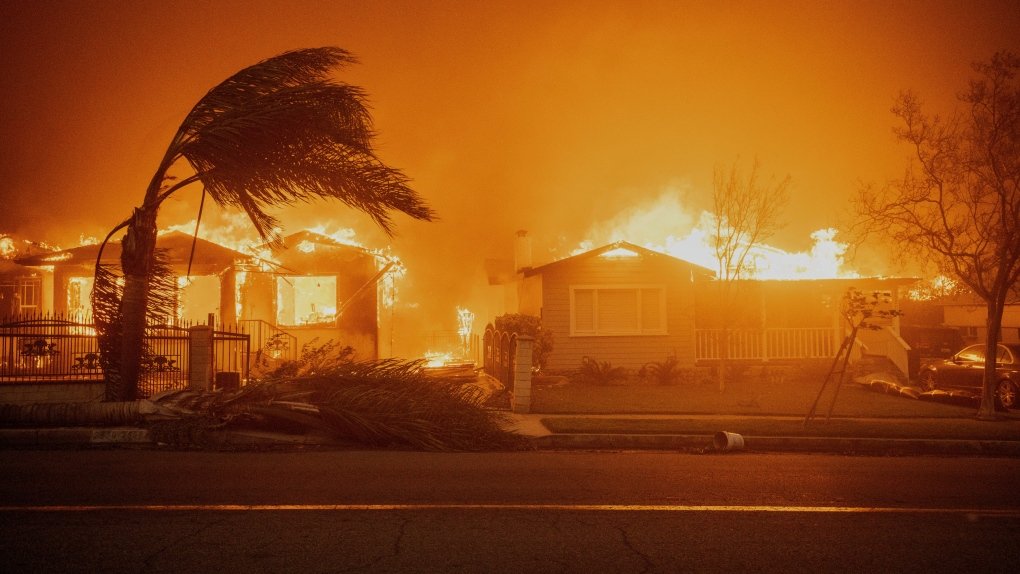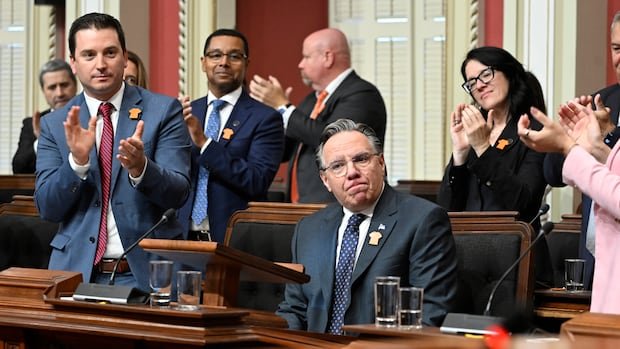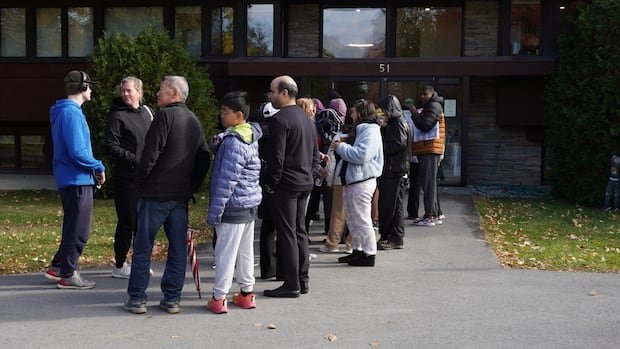NEW YORK –
Lynne Levin-Guzman was in the front yard of her 90-year-old parents’ home in Los Angeles County, California, trying to protect it with a garden hose, because her insurance company wouldn’t do it anymore.
“I know I’m not supposed to be here, but this is my parents’ house and they just lost: their fire insurance was canceled. So they’re dealing with this,” he told CNN affiliate KABC. “They’ve lived in this house for 75 years and they had the same insurance and these insurance people decided to cancel their fire insurance.”
“And they wonder why people leave California,” he added.
The experience of Levin-Guzmán and her parents is increasingly common. Between 2020 and 2022, insurance companies refused to renew 2.8 million homeowners policies in the state, according to the most recent data from the California Department of Insurance. That includes 531,000 in Los Angeles County, where fires are currently burning.
Some of those policies were not renewed by the owners, according to an insurance industry trade group. But most of those policies were canceled by insurers.
The problem has continued to increase in recent years, say State Insurance Commissioner Ricardo Lara and consumer groups. California insurers have refused to issue new policies in areas they consider high risk for wildfires, which represent a large percentage of the state.
The growing threat of wildfires and the failure of insurance companies to offer coverage in large areas of California at risk of these devastating disasters has become a crisis for homeowners across the state. And while the state has recently taken steps to address the problem, those new rules are drawing their own criticism because of the increased costs for homeowners that could accompany them.
A firefighter battles the Eaton Fire on Wednesday, Jan. 8, 2025, in Altadena, Calif. (AP Photo/Ethan Swope)
The problem of canceled policies has forced some homeowners to go without fire insurance or to use a program established by the state (but without taxpayer support) called California’s FAIR plan. Those policies have higher premiums than traditional private insurance and less coverage, often requiring homeowners to purchase additional “comprehensive” coverage at an even higher cost.
Although FAIR is supposed to be an insurance provider of last resort, demand for its policies has skyrocketed. Its housing exposure in September rose 61 percent to $458 billion from a year earlier, and triple what it was just four years ago. Its trade policy exposure has risen even faster, nearly doubling to $26.6 billion in September and up 464 percent over the past four years.
California FAIR attempted to assure concerned homeowners that it would be able to handle claims resulting from this week’s massive fires.
“FAIR Plan, which is primarily a catastrophe insurer, is prepared for this and is actively serving customers who have filed claims,” it said in a statement Wednesday. “The FAIR Plan has payment mechanisms, including reinsurance, to ensure that all covered claims are paid.”
Regardless of FAIR’s financial situation after these fires, homeowners will almost certainly foot the bill in the form of higher premiums. One way or another, it will probably be even more expensive to live in California.
New insurance regulations have just been announced
To give California homeowners in high-risk areas an alternative to California FAIR, the California Department of Insurance just announced two weeks ago new regulations designed to get private insurers to begin writing policies in prone parts of the state. to fires. The policy is designed to get private insurers to take back much of the coverage now handled by California FAIR.
The rules will require insurers to write policies in fire-prone areas equal to at least 85 percent of their statewide market share.
But the policy also gives insurers something they have been looking for for years: the ability to take into account the cost of reinsurance policies, which are policies they buy from other companies to spread their risk, as part of their insurance calculations. rates. California has been the only state that did not allow the cost of reinsurance to be part of rate calculations. Reinsurance has been increasing due to both the risks posed by climate change and the rising cost of claims as inflation drives up the price of labor, lumber and other raw materials.
 The Palisades Fire ravages a neighborhood amid high winds in the Pacific Palisades neighborhood of Los Angeles, Wednesday, Jan. 8, 2025. (AP Photo/Damian Dovarganes)
The Palisades Fire ravages a neighborhood amid high winds in the Pacific Palisades neighborhood of Los Angeles, Wednesday, Jan. 8, 2025. (AP Photo/Damian Dovarganes)
Therefore, it is very likely that the rates charged by private insurers will increase as a result of this new policy.
“We are being realistic about the risks in California,” Lara told CNN on Wednesday. “We can never get to affordability unless we address availability.”
But Lara’s new policy has been harshly criticized by Consumer Watchdog, a nonprofit, nonpartisan consumer advocacy group that focuses on the insurance market in California. It is estimated that insurance rates could increase by 40 to 50 percent as a result of the change, an estimate Lara disputes. It points to rate increases of 25 percent or more approved by the state for many major national insurers, such as State Farm, Farmers and Allstate in just the last 13 months.
And the group says there are too many problems with the new rule that will allow insurers to continue avoiding residents in fire-prone areas who need insurance the most.
“This new policy is guaranteeing higher rates but not necessarily access to coverage,” said Carmen Balber, executive director of Consumer Watchdog. “The commissioner has given the insurance sector what it wants. There are so many loopholes and slack in the rule that homeowners won’t see expanded coverage for a long time, if ever.”
Rising costs
The Insurance Information Institute, an insurance industry trade group, says it supports the new rules, arguing it is the best solution to allow its members to insure the fire-prone part of the market that most needs fire insurance. While the industry’s own statistics show it has been profitable in California in recent years, he said massive losses in 2017 and 2018 caused by wildfires wiped out more than a decade of profits. And he says his costs continue to rise, requiring increased insurance premiums.
“We have seen that the cost of reinsurance has been increasing due to climate risk and also inflation,” said Janet Ruiz, spokesperson for III. California is the only state that has not allowed the cost of reinsurance to be factored into rates, he said.
Lara said that as some of the homeowners who have been forced to opt into the FAIR plan are able to find private insurance once again, their premiums could fall, even if those insurers’ rates are higher than they used to be because The cost of reinsurance is now calculated in your rate.
“This will set premiums fairly for consumers,” he said. “The cost of insurance has skyrocketed. Inflation is an even more important factor than climate change. “We have to take it into account.”
But Consumer Watchdog said the industry has been profitable in California even without these rules and should be required to write policies for those who have lost coverage without the change in rate calculations.
Despite what insurers claim, he said, “the insurance industry is not on the brink of a catastrophe in California.”
The-CNN-Wire
™ and © 2025 Cable News Network, Inc., a Warner Bros. Discovery Company. All rights reserved.








